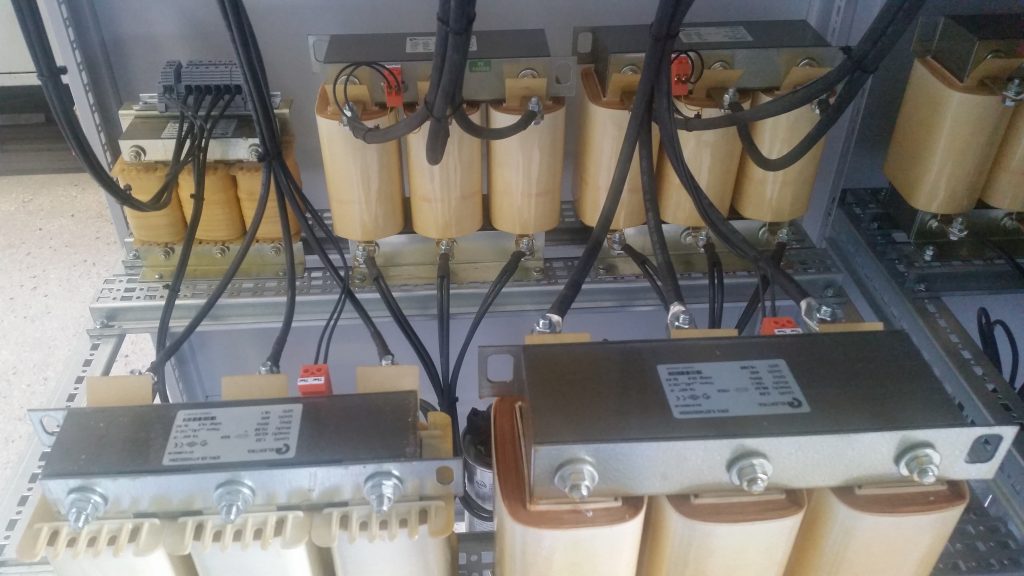
Choosing a harmonic filter reactor is of great importance in terms of ensuring energy quality in facilities. An improperly designed filter system can do more harm than good.
1 – Determining the resonant frequency
The most commonly used resonance frequency value in the industry is 189 Hz. In addition, 134 Hz and 210 Hz are produced as standard in our country. In some countries, resonance frequencies such as 139 Hz, 177 Hz, 204 Hz are also used as standard.
While determining the resonance frequency, the voltage harmonics values and current harmonics values of the busbar to which the filter will be connected are taken into consideration. Especially the 5th harmonic values are critical. The closer the resonant frequency is selected to 250 Hz, the more the unwanted 5th harmonic currents that the filter will draw from the network will increase. On the other hand, filtering performance of 5th harmonic currents on the load side will also increase. The further the resonance frequency is from 250 Hz; The 5th harmonic currents (such as 134 Hz) drawn by the filter from the network will decrease, but it will not filter the 5th harmonic currents on the load side. For this reason, the resonance frequency should be determined by evaluating the weights of current and voltage harmonics. If the 5th harmonic efficiency of the load current is high, but the 5th harmonic efficiency of the grid voltage is low, it would be beneficial to approach 250 Hz. However, if the 5th harmonic efficiency of the load current is low and the 5th harmonic efficiency of the grid voltage is high, then 250 Hz should be avoided.
2 – Saturation of harmonic filter reactors
Harmonic filter reactors are produced in such a way that a certain current flows over them. If a current much higher than the nominal value passes through the reactor; In this case, the magnetic circuit of the reactor is saturated and the reactor behaves like a short circuit. The number of times the rated current of the reactor will be saturated is expressed by a coefficient called linearity.
3 – Noise in harmonic filter reactors
It is normal for harmonic filter reactors to make some humming noise when operating. However, the fact that this amount of noise is disturbing is an indication that the reactor is operating at a current above its capacity. In this case, the harmonic components of the current passing through the reactor should be measured. If the reactor is filtering a current above its capacity, then a boosted reactor should be used.
4 – Thermal analysis in reactors
There is a thermistor on the harmonic filter reactors that measures the winding temperature and makes contact when the maximum operating temperature is exceeded. Usually this thermistor is in the middle phase and must be connected to the contactor circuit. In addition, the heat produced by the reactors should be taken into account in the panel designs and the panel dimensions should be determined accordingly.
As a result; If harmonic filter reactors are selected correctly, the energy quality and energy efficiency of a facility will be improved, the frequency of blowing fuses, and the number of contactor and capacitor failures will be reduced.
